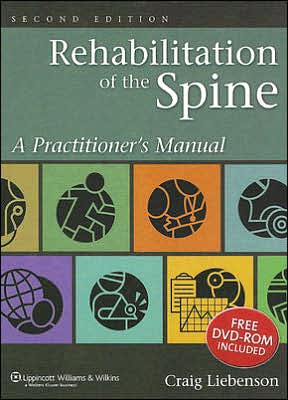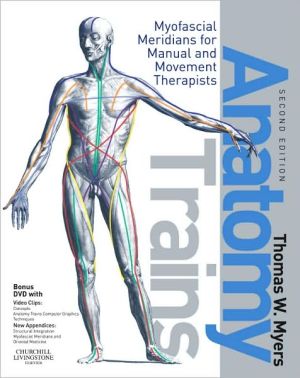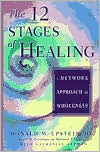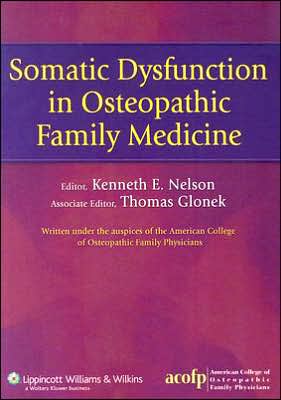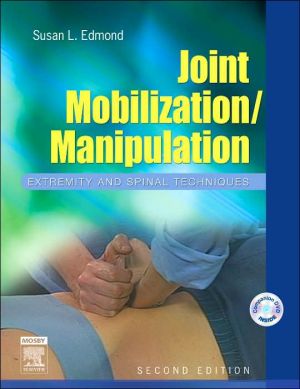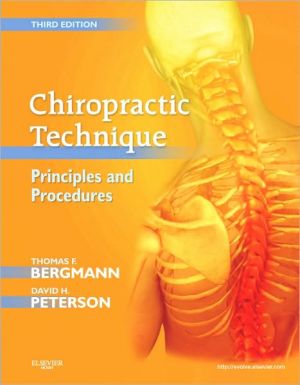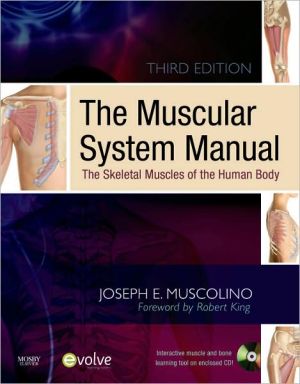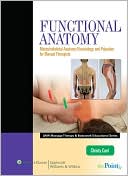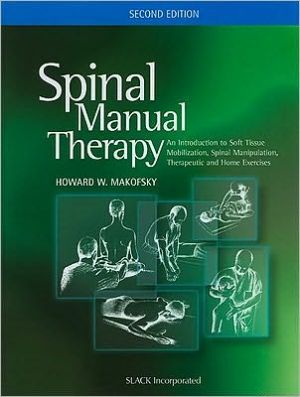Rehabilitation of the Spine: A Practitioner's Manual
The foremost authorities from chiropractics, orthopaedics and physical therapy present a practical overview of spinal rehabilitation. This clinical resource presents the most current and significant spinal rehab information, showing how to apply simple and inexpensive rehabilitation in the office. The updated Second Edition includes clinical/regional protocols and chapters on diagnostic triage, acute care, functional assessment, recovery care, outcomes, and biopsychosocial aspects.\ A bonus...
Search in google:
The foremost authorities from chiropractics, orthopaedics and physical therapy present a practical overview of spinal rehabilitation. This clinical resource presents the most current and significant spinal rehab information, showing how to apply simple and inexpensive rehabilitation in the office. The updated Second Edition includes clinical/regional protocols and chapters on diagnostic triage, acute care, functional assessment, recovery care, outcomes, and biopsychosocial aspects.A bonus DVD offers demonstrations of key therapies and procedures. Dana J. Lawrence This book presents a comprehensive discussion of basic rehabilitation principles and practices and their integration into chiropractic practice. The emphasis is upon the model developed by the Eastern European pioneers Karel Lewit and Vladimir Janda, both of whom have prepared material for this book. The book follows a bit of an evolutionary approach, first by describing basic principles, then by discussing assessment and diagnostic procedures, and finally by providing an exhaustive amount of material on functional restoration. There is also material on patient education and the psychological issues that can arise in rehabilitation practice. The basic purpose is to discuss the basic skills of rehabilitation, integrate them into standards of care as used by chiropractors, and apply them to the functional pathologies of the motor system. The emphasis is therefore upon the clinical practice and application of these skills. The primary audience is practicing chiropractors and chiropractic students. This book will also be of use to physiatrists, orthopedists, physical therapists, and anyone else with an interest in either rehabilitation or manual medicine. One of the great features of this book is its ample illustration. There are literally hundreds of photographs and figures, which are used to demonstrate all the procedures that are discussed. A number of clinical algorithms are also presented. The references are more than adequate and completely up-to-date. Dr. Liebenson has done an admirable job of bringing together some of the most renowned people in rehabilitation practice. In addition to the contributions by Lewit and Janda, there is material in this text by Ludmila Vasilyeva,William Kirkaldy-Willis, Robin McKenzie, Vert Mooney, and Howard Vernon. Thus, the material is both comprehensive and clinically oriented. The two major sections in this book concern assessment of musculoskeletal function and functional restoration, and both are very well done. Assessment focuses largely upon outcomes assessment, especially as it applies to private practice. The section on functional restoration is directed toward the use of procedures in chiropractic practice; thus, the role of manipulation is not overlooked, and the author allows for some differences in approach to be discussed. This is a very good book.
1Active care : its place in the management of spinal disorders32The role of muscles, joints, and the nervous system in painful conditions of the spine303Quality assurance : the scope of the spine problem and modern attempts to manage it514Putting the biopsychosocial model into practice725Lumbar spine stability : mechanism of injury and restabilization936The sources of back pain1127Diagnostic triage in patients with spinal pain1258Outcome assessment146App. 8AForms1699Assessment of psychosocial risk factors of chronicity - "yellow flags"183App. 9AYellow flag form20110Evaluation of muscular imbalance20311Quantification of physical performance ability22612Physical performance tests : an expanded model of assessment and outcome26013Employment screening and functional capacity evaluation to determine safe return to work27614Active self-care : functional reactivation for spine pain patients29515McKenzie spinal rehabilitation methods33016Brugger methods for postural correction35217Rehabilitation of breathing pattern disorders36918Soft tissue manipulation388App. 18AExteroceptive therapy40319Manual resistance techniques407App. 19AThe role of active release technique in rehabilitation46020Neuromobilization techniques - evaluation and treatment of adverse neurodynamic tension46421Manipulation techniques for key joints48722Sensory motor stimulation51323Facilitation of agonist-antagonist co-activation by reflex stimulation methods53124Yoga-based training for spinal stability56625Spinal segmental stabilization training58526Functional stability training612App. 26AProprioceptive taping - an adjunct to treating muscle imbalances66327Global muscle stabilization training - isotonic protocols66728Weight training for back stability68829Advanced stabilization training for performance enhancement71230Nutritional considerations for inflammation and pain72831A cognitive behavioral therapy program for spinal pain74132An integrated approach to regional disorders75333Managing common syndromes and finding the key link77634Integrated approach to the lumbar spine79835Integrated approach to the cervical spine85236The patient and the doctor88937The role and safety of activity in the elderly898App. 37APhysical activity readiness questionnaire91438Role of non-operative spinal specialist in managing the spine patient91539From guidelines to practice : what is the practitioner's role?933
\ Dana J. LawrenceThis book presents a comprehensive discussion of basic rehabilitation principles and practices and their integration into chiropractic practice. The emphasis is upon the model developed by the Eastern European pioneers Karel Lewit and Vladimir Janda, both of whom have prepared material for this book. The book follows a bit of an evolutionary approach, first by describing basic principles, then by discussing assessment and diagnostic procedures, and finally by providing an exhaustive amount of material on functional restoration. There is also material on patient education and the psychological issues that can arise in rehabilitation practice. The basic purpose is to discuss the basic skills of rehabilitation, integrate them into standards of care as used by chiropractors, and apply them to the functional pathologies of the motor system. The emphasis is therefore upon the clinical practice and application of these skills. The primary audience is practicing chiropractors and chiropractic students. This book will also be of use to physiatrists, orthopedists, physical therapists, and anyone else with an interest in either rehabilitation or manual medicine. One of the great features of this book is its ample illustration. There are literally hundreds of photographs and figures, which are used to demonstrate all the procedures that are discussed. A number of clinical algorithms are also presented. The references are more than adequate and completely up-to-date. Dr. Liebenson has done an admirable job of bringing together some of the most renowned people in rehabilitation practice. In addition to the contributions by Lewit and Janda, there is material in this text by Ludmila Vasilyeva,William Kirkaldy-Willis, Robin McKenzie, Vert Mooney, and Howard Vernon. Thus, the material is both comprehensive and clinically oriented. The two major sections in this book concern assessment of musculoskeletal function and functional restoration, and both are very well done. Assessment focuses largely upon outcomes assessment, especially as it applies to private practice. The section on functional restoration is directed toward the use of procedures in chiropractic practice; thus, the role of manipulation is not overlooked, and the author allows for some differences in approach to be discussed. This is a very good book.\ \ \ \ \ BooknewsPractical how-to manual for chiropractors integrates fields of chiropractic, myofascial therapy, and exercise into a cost-effective approach for treating spinal disorders. Thoroughly covers functional assessment, manual resistance techniques, stabilization exercises, and patient education. Identifies and discusses psychosocial factors that might predispose patients to a disability, chronic pain, and treatment dependency. Contributors are practitioners from various disciplines. Annotation c. Book News, Inc., Portland, OR (booknews.com)\ \ \ From The CriticsReviewer: Dana J Lawrence, DC, MMedEd, MA(Palmer College of Chiropractic)\ Description: This book presents a comprehensive discussion of basic rehabilitation principles and practices and their integration into chiropractic practice. The emphasis is upon the model developed by the Eastern European pioneers Karel Lewit and Vladimir Janda, both of whom have prepared material for this book. The book follows a bit of an evolutionary approach, first by describing basic principles, then by discussing assessment and diagnostic procedures, and finally by providing an exhaustive amount of material on functional restoration. There is also material on patient education and the psychological issues that can arise in rehabilitation practice.\ Purpose: The basic purpose is to discuss the basic skills of rehabilitation, integrate them into standards of care as used by chiropractors, and apply them to the functional pathologies of the motor system. The emphasis is therefore upon the clinical practice and application of these skills.\ Audience: The primary audience is practicing chiropractors and chiropractic students. This book will also be of use to physiatrists, orthopedists, physical therapists, and anyone else with an interest in either rehabilitation or manual medicine.\ Features: One of the great features of this book is its ample illustration. There are literally hundreds of photographs and figures, which are used to demonstrate all the procedures that are discussed. A number of clinical algorithms are also presented. The references are more than adequate and completely up-to-date.\ Assessment: Dr. Liebenson has done an admirable job of bringing together some of the most renowned people in rehabilitation practice. In addition to the contributions by Lewit and Janda, there is material in this text by Ludmila Vasilyeva, William Kirkaldy-Willis, Robin McKenzie, Vert Mooney, and Howard Vernon. Thus, the material is both comprehensive and clinically oriented. The two major sections in this book concern assessment of musculoskeletal function and functional restoration, and both are very well done. Assessment focuses largely upon outcomes assessment, especially as it applies to private practice. The section on functional restoration is directed toward the use of procedures in chiropractic practice; thus, the role of manipulation is not overlooked, and the author allows for some differences in approach to be discussed. This is a very good book.\ \ \ \ \ 4 Stars! from Doody\ \
